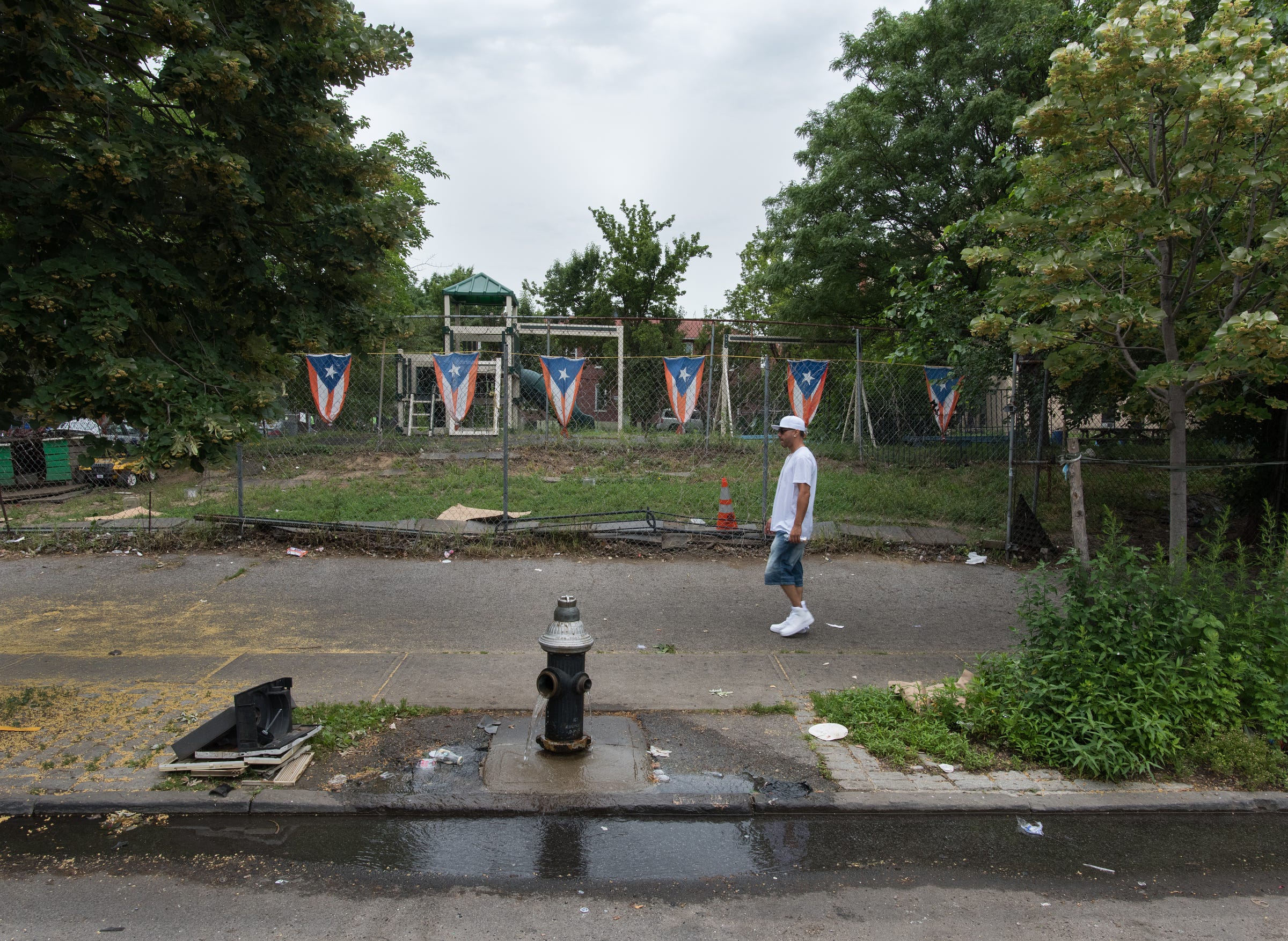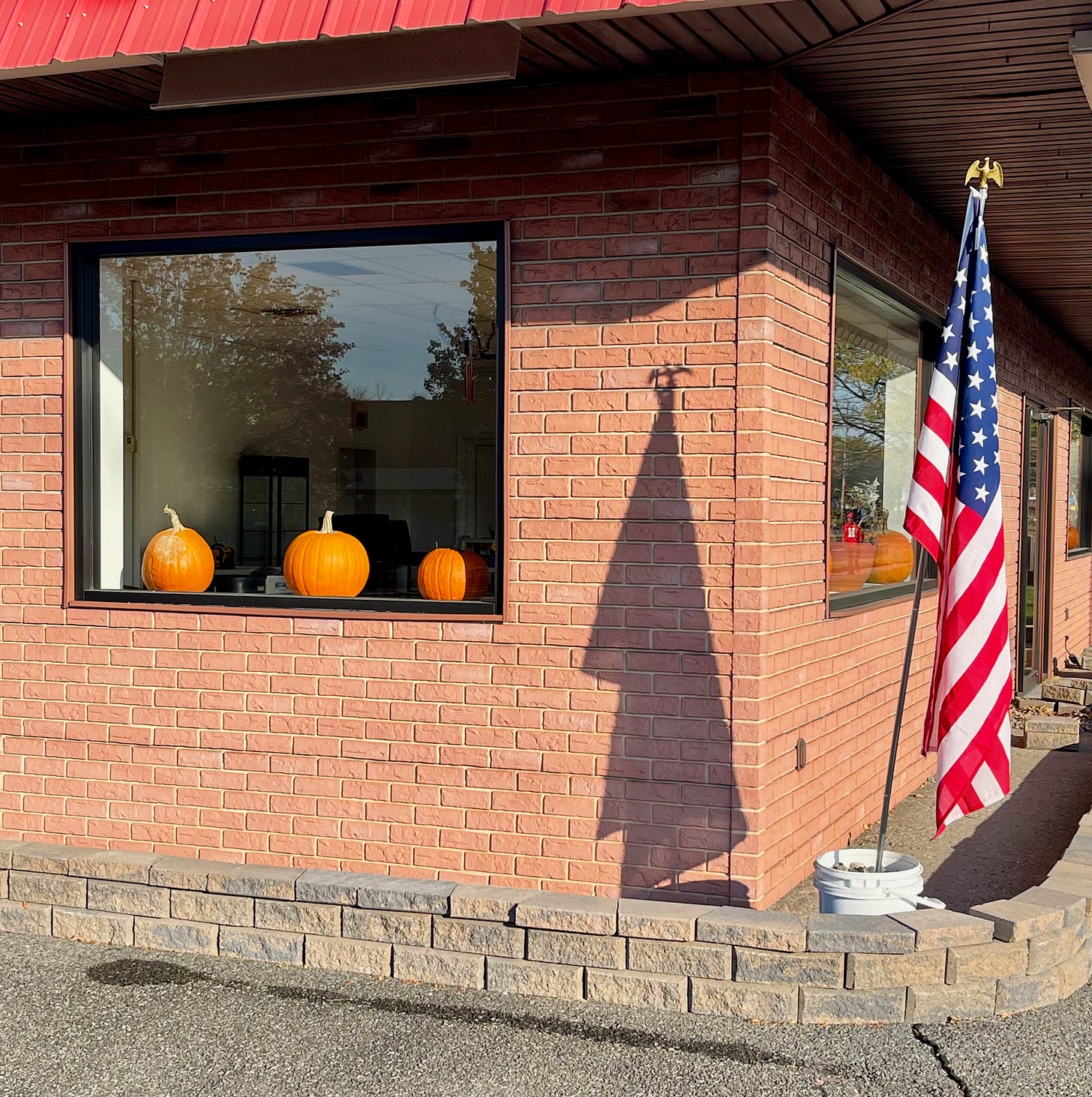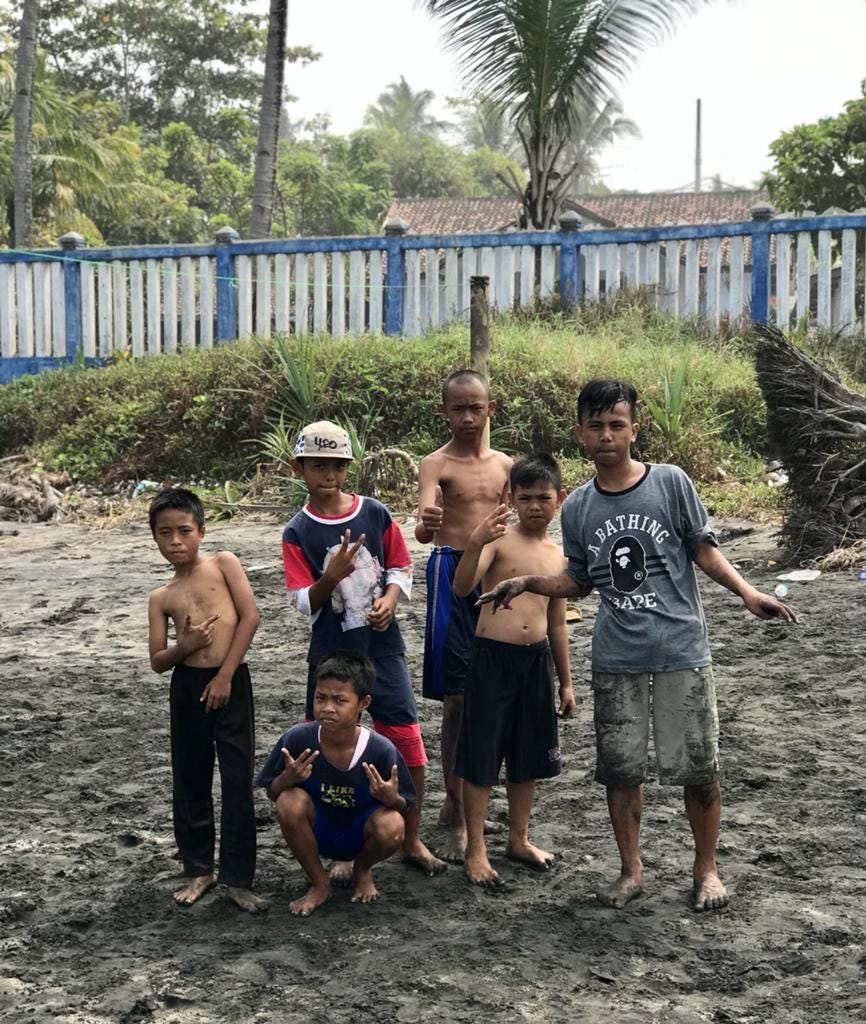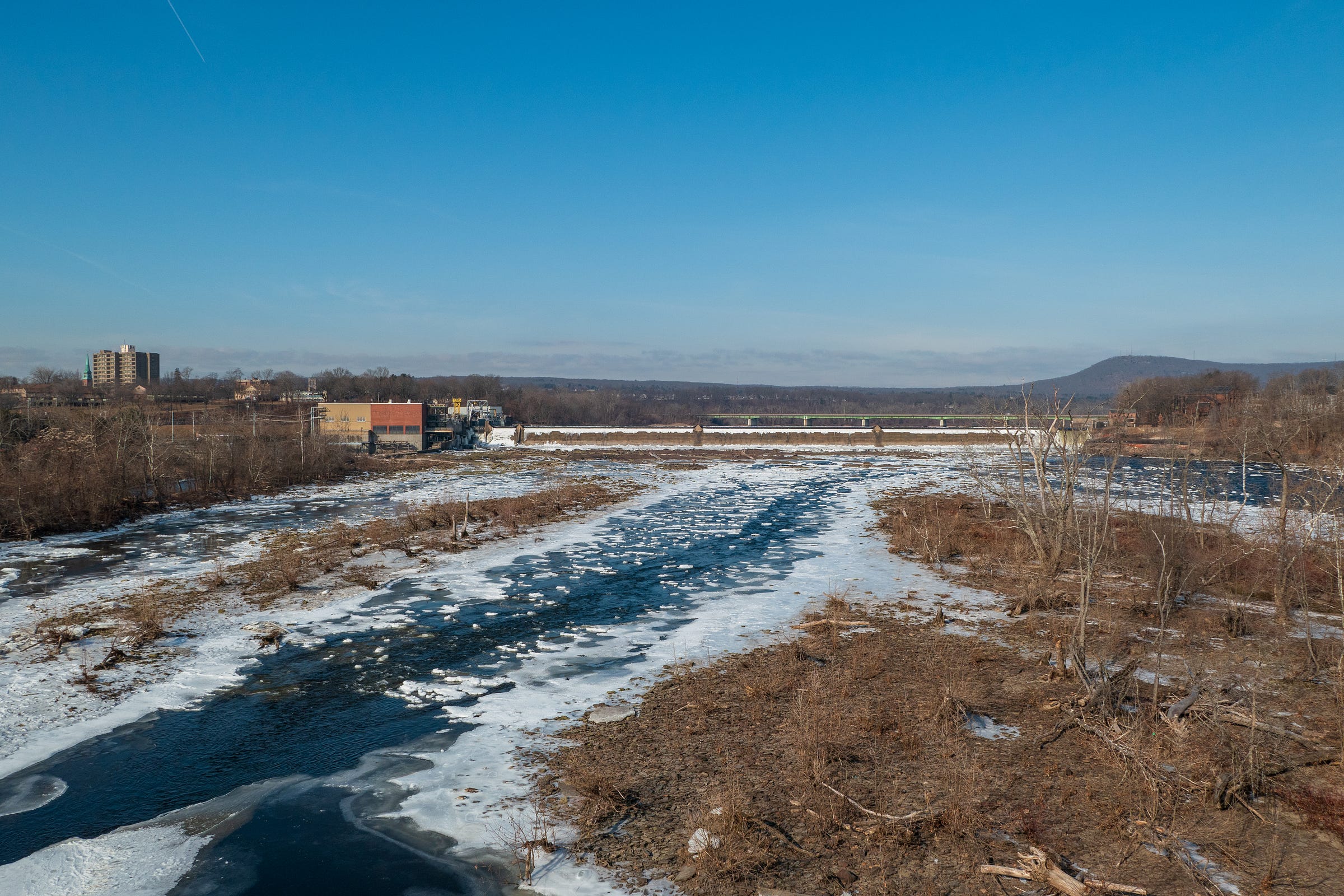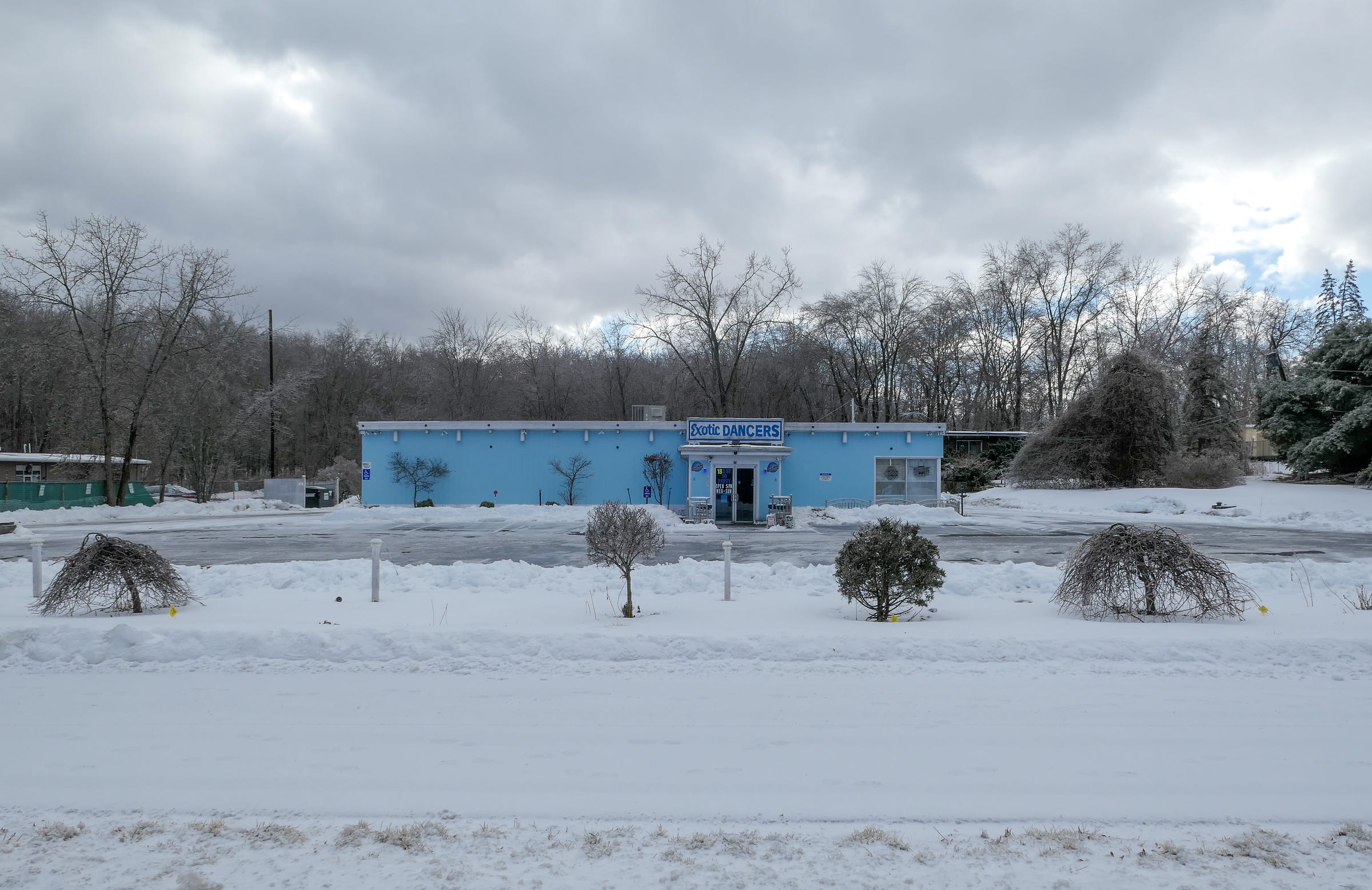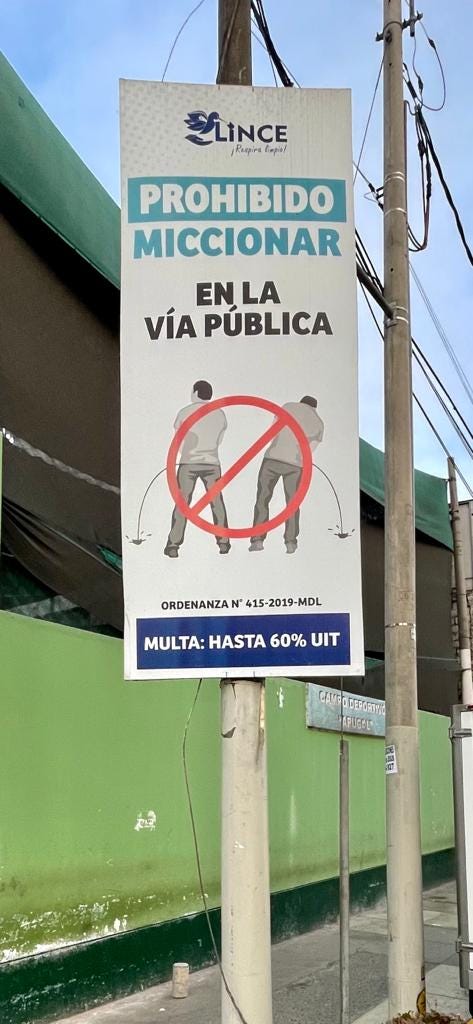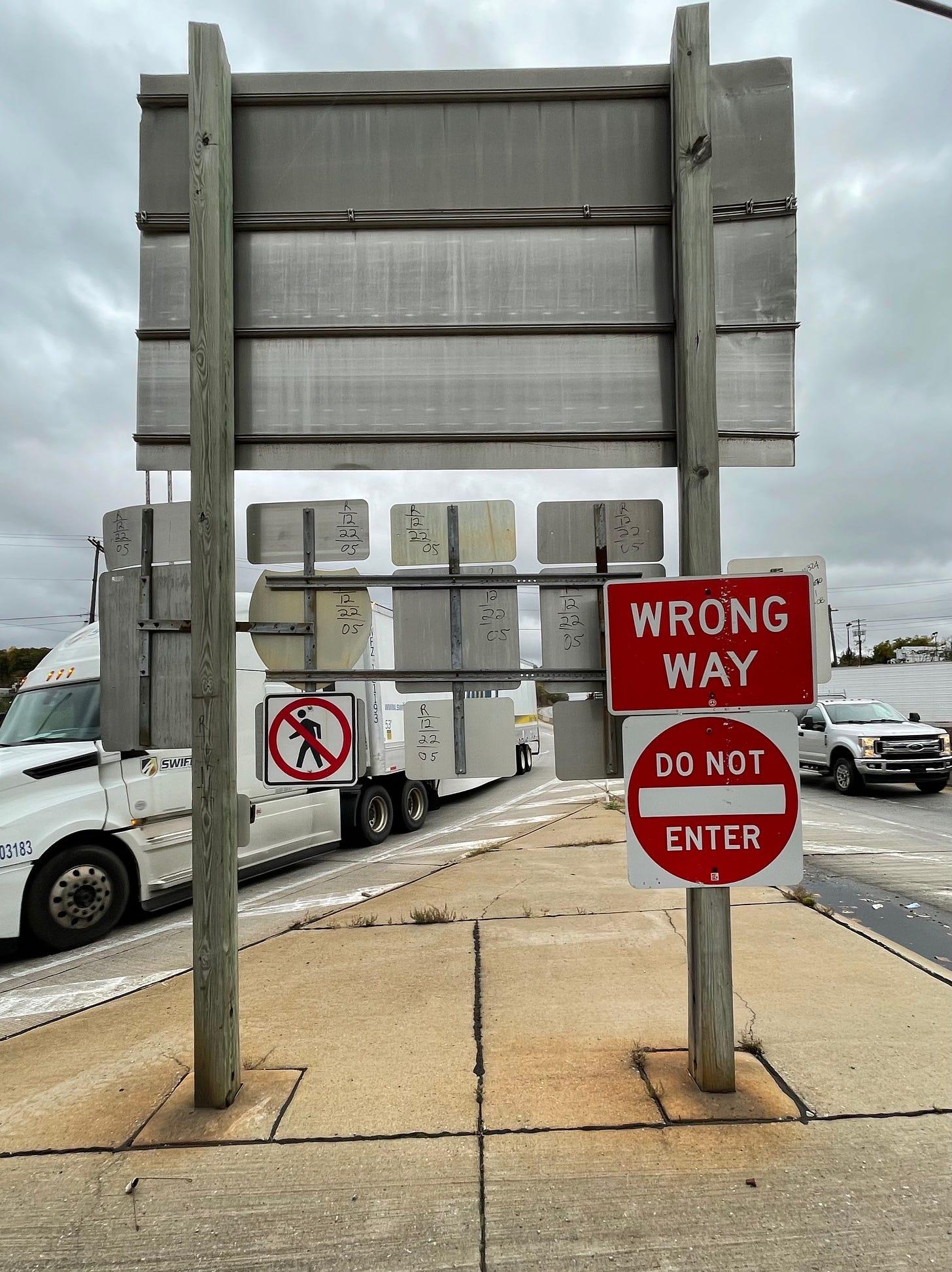How to Walk (12 miles a day)
[ comments ]
In Why I Walk I argued for taking long seemingly pointless walks, sometimes up to twenty miles a day. To learn.
That is something I been doing most of my life, mostly on weekends, but over the last two years I’ve been more consistent, walking about twelve miles a day, and doing twenty mile walks a few times a month.
I have gotten a lot of questions about tips I have learned from doing that. Things like, what to wear, route selection, how not to get injured, safety, etc.
Below is my attempt to answer some of them, and if there is anything I missed, will try to respond to as many questions as I can in the comments.
While not everyone can or should walk twelve miles a day, hopefully they apply to whatever amount of walking you do.
How to find the time? And what to do not to get bored.
Walking twelve miles takes about three and a half hours. Most people don’t have that time, not people with kids, commutes, and full time jobs. A more realistic goal is around seven miles, which takes about two hours.
Still, if you want to do twenty mile walks on the weekends, or when in a new town, you need to walk, or jog, at least a few times during the week. Even if it’s only a two mile walk in the morning, or after work. Otherwise you’re going to get injured, or spend the entire long walk miserable and wanting it to end.
For the long walks in new places, I don’t get bored, because, well, I am discovering stuff. That was kinda the point of the “Why I Walk” post.
For my daily walks, more about health and relaxation, boredom is a real problem. Because you’re doing the same route over and over.
For those I listen to audiobooks, podcasts, and lectures. I used to hate audiobooks, but once you get into them, the idea of sitting in a chair reading a book seems crazy. Not when you can have someone read to you in a nice voice while you exercise. It is like the only good multitasking ever.
Also, almost any audio book you want you get for free.
Get the Overdrive app for your phone, then join as many libraries (remember those) as you can, and start downloading books. The best to join, if you live anywhere in NY state, is NYC public library. It has almost every audio book ever. All you need to join is proof of NY state residency (a drivers license for example) and can be done from your computer.
Most other states have similar options. Try joining the library of the biggest city in your state, even if you don’t live there.
The other “boredom killing by learning” option is podcasts, and once you go down the podcast wormhole, you may never come back. I think there is about twenty podcasts available for whatever niche subject you want to explore.
My current obsession is medieval and ancient military history, philosophy, and NFL. So each day I have about ten one hour episodes on things like “The Plots Against Henry VII", “Drafting QBs & Role of GMs”, “Medieval Logic”, and so on.
How can I possibly be bored?
What to wear?
My three mantras on clothing are: Comfort comfort comfort. Consistency consistency consistency. Simple simple simple.
So I have two basic walking uniforms. One for the summer, and one for the winter. Both simple and comfortable.
Once I find something I like, I buy multiples of the same thing, and rotate them. So four of the same pants, or shirts, etc.
I don’t care about how I look (which is goofy and drab), only comfort. If you do care about how you look, then upgrade from the options below, or add some flair to your outfit, but keep it comfortable. No bulky flair.
For long walks in new places, especially cities, I try not to be too flashy. So no watches, rings, necklaces, flags, horns, sparkles, or clothes with fancy logos. Nothing distinctive.
It makes you stick out, which I think is the wrong tactic for learning. You should want to blend in. Be another person in the crowd. Although Tom Wolfe disagrees.
My two walking uniforms:
-
Summer Uniform
Wrangler relaxed fit cargo shorts: I don’t carry anything I can’t put in my pockets, and I don’t believe in backpacks, since it becomes something you have to worry about. So I need lots of pockets, and Cargo shorts have lots of pockets.
I could do an entire essay on good pockets, but my pocket preferences are surprisingly not universal. I like back-pockets you can pull stuff out of quickly (so no flap), and a few other front pockets you can close tight (with velcro, not buttons. Buttons are evil). My Wrangler shorts have that.
Your pocket preferences are probably different, since I have come to learn, the hard way, everyone has a pocket preference, they just don’t necessarily know it.
So don’t buy anything without first knowing your pocket preference, and you can only know your pocket preferences by accepting you have one, and then figuring out what it is. Which means trying stuff on and exploring the pocket options.H&M Sport athletic shirt. Breathable. Drys easily. Doesn’t chafe. Makes you look fifteen.
I like H&M, but any brand works. As long as it’s breathable and light. I like polyester blends, but some people don’t like that. In really hot weather though, it is a must.Light white linen button up over-shirt. Preferably with a chest pocket. Because you can never have enough pockets.
I use these for protection against sun. Long or short sleeves, depending on the weather. I have no fav brand. I do however know what cut I like, and since it is hard to get, plan on getting some made at a tailor when in Vietnam. Everyone is different though. Get whatever is simply the most comfortable to you. But get white. For the sun.Wide brim sun hat with neck flap. They are a dime a dozen. Any will do, as long as it’s light weight. I bought mine in WalMart, in the fishing section, for like $10s.
A good sunhat is essential if you don’t wanna be squinting all the time and getting sunburned. Yes they are goofy, but check out anyone who works in the sun all day and see what they are wearing. All over the world. No matter the culture. Big goofy hats.Teva Hurricane Xlt2 Sandals. I will die on this hill. These are the best walking shoes I have ever had. Maybe the best shoes period. Breathable. Sturdy. Long lasting. I have literally walked the world in them. I own four pair now, all the same, three as back ups, and break in the new ones slowly.
I didn’t believe in sandals until I was in Jakarta, and saw everyone wearing them, including guys working with heavy equipment. Where were their steal toe boots I was told you have to wear. Not here in the 94 degree heat. Nope. Because boots and running shoes, become unbearable hot in real heat.
After switching to sandals in Jakarta, when I got home I discovered that with the right socks (heavy wool ones. I buy Dickies, cause workers know what works), they can be worn pretty much years round, in temperatures as low as 10. Except in snow.
-
Winter Uniform
The Layers Layers Layers mantra is the correct mantra.
I still use my Teva sandals’ for most of the winter, no matter how cold, with heavy socks, sometimes two layers of them. Except for snow or slush. Then I switch to Keens hiking boots.
But I do the switch slowly. You can’t go immediately from one to the other on a twenty mile walk. You will kill your feet. If a snow storm is coming, and we are going to have a week of ice, I slowly ease into boots over a few days. Breaking them in a little more each day, around the yard or house, or on shorter walks, before the snow hits, so by the time I have to walk a full walk in them, I won’t get blisters. Sorry, but I care about this silly stuff.For legs, I wear loose fitting Wrangler Carpenter pants. Again, mainly because they have my pocket preference. When it gets real cold (below 25), I wear running tights under them.
Again. The right walking pants is all about your pocket preference. Make sure you know what that is, because over 20 miles your gonna realize what it is.For my body, I wear two to four layers, depending on how cold. The key is the outer layer, the Jacket, and like my Teva sandals, a hill I will die on for — The LL Beans PrimaLoft Packaway Jacket. It is simply amazing. Light, stupidly warm, and with good pockets. It is especially great for travel, since it can be stuffed into a tiny sandwich sized ball that fits in a backpack. It is worth every dollar.
Buy the orange color, cause you don’t want to be hit by a car.
Beneath that I wear a long sleeve t-shirt, then when colder a running thermal beneath that, then when really cold, another LL Bean product, their Cresta Wool Midweight 250 Crew Top.
I generally only wear the four full layers when it is gets below 25. But I don’t get cold easily.For my head, I wear a G.I. Jeep cap. Or, as some know it, a Radar Cap from the show MASH. You can get them, for cheap, in almost any military supply store, like Army Navy, or just order online. It solves both the wanting to be warm thing and the not wanting the sun in your eyes things. It, IMO, is a godsend. So thank you US Military. For keeping America safe, and for good winter caps.
For really cold weather (below 20), I wear a neck gaiter. It looks goofy, and not nearly as fashionable as a scarf, but again, check out anyone working out in the very cold. Neck Gaiters.
Always carry a tube of chapstick (I keep it in my jacket pocket.), because split lips is a small little hell that you don’t need. I buy the cheapest from the tub of tubes at the front of every gas stations counters. It cost a dollar and it will last for a few years. Unless you lose it. Don’t lose it. Did you lose it? Jesus. Again. How many times do I have to tell you not to lose it.
Gloves. I am not the right person for glove advice since I might have the warmest hands ever. So I buy simple knit gloves I find in dollar stores. When that isn’t enough, I shove my hands in my pockets. Maybe I am not the best person to ask on this one.
How to avoid injury
Now that I am close to sixty, this is a really big deal, and partly why I walk. It is the least injury-prone exercise. Certainly less than running. I haven’t been injured from all this walking yet, which is pretty amazing.
My rule of thumb is to try and aim for consistency, and never try to change my total miles walked in a week more than roughly 30% a week. Not up, or down. That means starting slowly, building up, then stay there. Don’t try to do a 20 mile walk, especially if your my age, just willy-nilly. Build up to that first.
Stretch before and after. All that stuff.
When walking, the second you get a cramp, or a weird feeling, wherever you are, stop, stretch, and massage it out. That means sometimes rubbing against a fire hydrant by the side of the road like a dog. But hey, it works.
When you get home, if you still have a little soreness do the ice massage ice massage ice massage thing. If you need to take a day off, do it, with no guilt.
The biggest issue for injuries is the feet, which are a cesspool of possible problems — Blisters, in-grown toe nails, ligament issues, cracked toes, fractured bones, etc.
So another little rule is to slather your foot (especially the toes) with Vaseline before putting on your socks. And always wear some form of sock, even in the worst heat. Without socks, you’re asking for blisters.
Bathroom and stuff like that
I try to plan my walks to have a two or three stopping point along the way where I can get water, use the bathroom, and escape from the heat/cold. McDonald’s (or any franchise), Lowe’s, Walmart’s, 7-11s, gas stations, are all good for that.
In big cities, especially overseas, Mall food courts are a great places to take breaks. They have all you need, including free WiFi if you need it. They also have bad Chinese, bad pizza, and bad hamburgers, if that is your thing. Most of all though, they are great places to watch people, and learn.
I don’t eat in mall food courts though, since I generally practice tactical dehydration/starvation when walking. I don’t drink much before and along my walks, or eat much, so I don’t need the bathroom much. For really long walks I basically fast during the day, until the very end, when I go crazy, gulp down about a gallon of water, eat a huge meal, then maybe a few beers. Ok, lots of beers.
Walking when stuffed, and you have to pee all the time, is simply no fun.
Obviously don’t do this in really warm weather, where heat stroke is a real risk. Try to get water every 4 miles. I prefer free tap water, like water fountains, but this generation seems to think water isn’t safe unless you buy it in a bottle, so it’s getting harder to do. That is especially true since Covid. A lot of places shut down what few water fountains they had, and haven’t reopened them.
If your a tap water fan like me, and a cheapskate (sorry, frugal) like me, you can still get tap water and ice at McDonald’s. They will give you a cup of it if you ask nicely, or a cup to use from the soda filled fountain. I also got no problem drinking out bathroom taps using the cup of my hand.
The idea that you can’t drink the water in other countries is largely a thing of the past, and a bottled water scam IMO. Yes, be careful when in certain countries, but in general, safe drinking water is pretty widespread in the world. Especially bigger cities.
For real bathroom emergencies, I pee in the woods, or in an empty lot. Obviously that is something I can do easily because I am a guy.
Also, if you ask nice enough, almost every store will let you use their bathroom in a real emergency. Offer to pay if they look skeptical.
Where to walk?
This is entirely up to you, but I prefer cities myself.
For new city walks, I spend hours on google maps, using street views, to come up with a general route that doesn’t look too pedestrian fierce. Making sure there are not highways without under or over passes, or eight lane roads with no sidewalks. That kinda thing. In almost every city, there is that kind of thing.
I don’t like to do loops, or ever backtrack. I much prefer going one way, from point A to point B, then taking a bus back. Again google maps is pretty good about finding how to get back by public transit, since in most larger cities, the timetables are linked to the map. Just choice the little rail icon in the directions menu instead of the little pedestrian icon.
I have always been able to get back to my start by some combo of bus, rail, metro. I might take a bit, but at the end of a long walk sitting is nice. Also, riding public transportation, especially buses, is like half the fun for me. Another way to see a city in a different way than most tourist see it.
For my daily stay in shape walks, when home, I do a loop that is a mix of rural county roads and then through a small town.
I am not really crazy about walking on rural roads, since most are built with very little space on either side. That especially sucks since I have discovered that whenever vehicles do come along, they do so in pairs, and in opposite directions, and meet exactly where you are, effectively shoving you off the road. I call it Arnade’s rule of being F*ed — Cars will always pass you exactly at the worst place to pass you.
It might seem alluring to walk along the side of the road, on the grass, rather than on the edge of the road itself, but that is asking for a twisted ankle, or stepping on a nail, or trash.
I do practice tactical stopping. When I see problem coming, I step off the road and stretch to let it all pass. No need rush into a broken leg.
What to carry?
Bring as little as possible. Again. Bring as little as possible. You don’t need nine different things. A lot of what you need can be done on your phone. The audio book apps, maps, etc. I also don’t use a back-pack, it is unnecessary, soaks your back, and bogs you down. It is another thing to be worried about, and you don’t want to be worried about things.
So I only bring what can fit in my pockets.
Phone. Which also serves as a map and weather report. We kinda take it for granted, but Smart Phones really are like that little personal assistant thing from Sci Fi movies of the 60s. They got almost everything you need.
The camera on the iPhone has now reached a point that it can be preferable to carrying a camera. It is versatile, has a strong lens, and most importantly, when in new places, nobody bats an eye when you whip it out to take a picture.
Still, I am a photo snob, so I also carry a camera (see below) on long walks. But if I forget to bring it, the iPhone camera is just fine.Credit card, ID, health insurance card, and enough cash to get out of an emergency. I keep them wrapped together with three hair ties (which can also be used for long hair in the heat). If overseas, I also bring my passport, but put it in a different pocket. Don’t want to lose both cards and passport.
For very long walks, an extra battery pack for phone. I got mine (Powertek) from a Walmart cut out bin for $3. It is small, lightweight, and can keep your phone alive for two days. It is perfect. Also, bring a small cord to charge the phone.
When out taking pictures, which is almost every long walk, I bring my camera. I have a Panasonic Lumix LX-10. It’s light, small, fits in my back pocket, and takes pretty good pics. It doesn’t have a viewfinder, which many people might hate, especially in sunny days, but I haven’t had an issue with that.
Like pocket preference, camera preference is a thing, and at this point, it is far far less about the optics, than about usability. At a certain price level (like $500 and above), most cameras are pretty equal. Optics wise, they are all good.
The difference is how easy they are to use, and that is a personal choice. The only way to figure out which is right for you, is play around with it for an hour or so.
Point is, don’t obsess over really technical things like lens this or that, just buy a camera you like using.
Safety
As a pedestrian, you are lowest on the totem pole. Everything is bigger than you and will win in a collision, so do everything you can not to collide. That means always assume everything will collide with you. Every car will turn in front of you, too busy looking at traffic. Every bike will be too busy worrying about cars to think of you. Every F450 doesn’t know how far out their side-view mirrors jut.
In rural settings, where there is no sidewalk, always always walk against traffic, never ever walk at night (unless you’re really desperate), and wear bright colors.
You can get good and cheap bright colored t-shirts and reflective vest’s at Walmart, Lowe’s, and other places that have section’s for people who work construction.
As far as the danger from other people, that is a whole other post.
I will end by saying, as a guy, I have never had any problems from other people. In all my years walking all over. But that it is sadly very very different for women.
My style is to act confident without being arrogant. Blend in and respect local customs, rules, etiquette, etc. Be as polite and gracious as possible. Maybe that has worked. Or maybe I have just been lucky.
Regardless, the best simple rule is, if you don’t feel safe don’t do it. Walking is great, but it isn’t worth getting killed for.
Questions
This was kinda stream of conciseness and I am sure I missed some stuff. I hope it is useful though.
If you have any question, as detailed as you like, and I will try to answer.
Thanks again, and enjoy walking!
Ready for more?
[ comments ]

